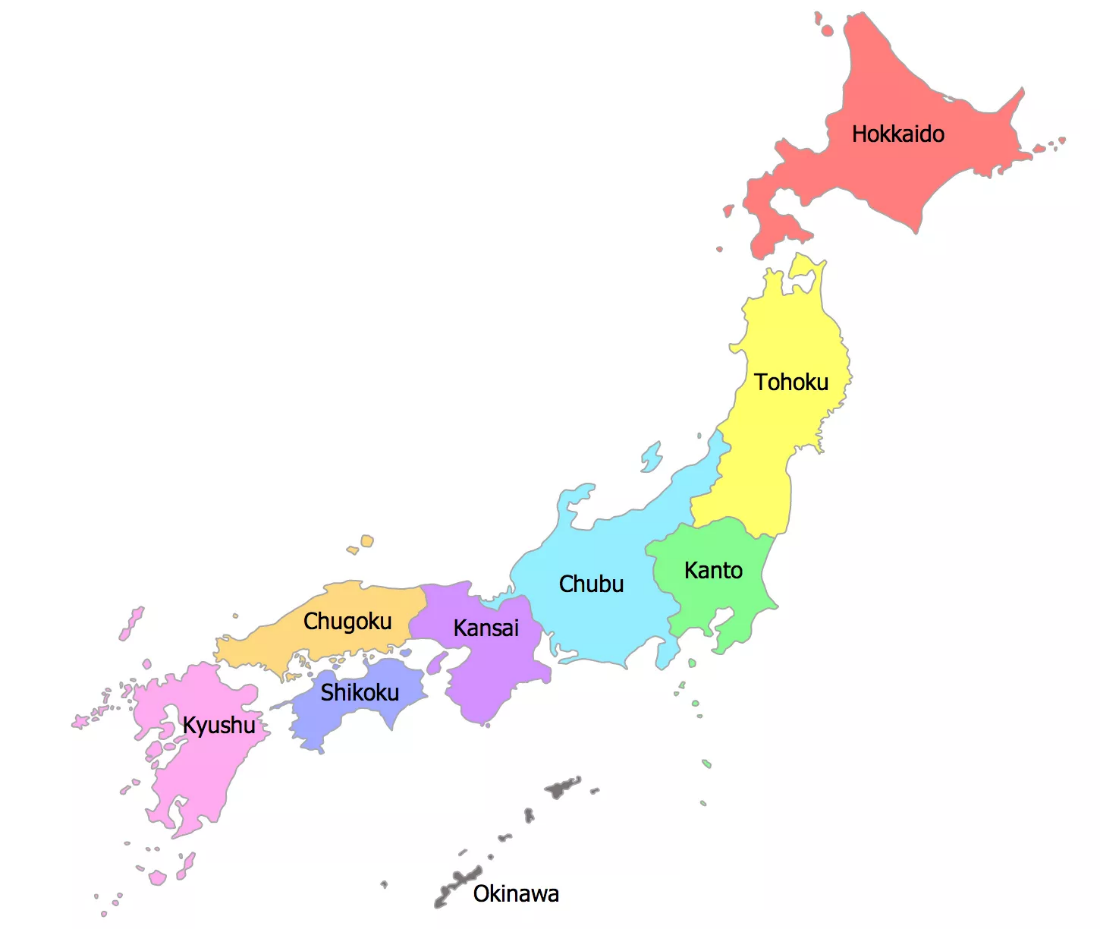Japanese Translation Services

Language History
The history of the Japanese language has caused much debate among scholars. Some theories suggest that it belongs to Ural-Altaic family, which includes Turkish, Mongolian, Manchu, and Korean. It was during the 6th century AD when the Chinese culture began influencing Japan including its writing system, giving Japanese the chance to write for the first time. In fact, approximately 40% of modern Japanese vocabulary still features words adapted from Chinese. The 12th century saw the syllabic writing systems, “hiragana” and “katakana” arise out of “kanji” (Chinese characters), giving Japanese a sense of freedom when it came to their writing system. In the 16-17th centuries, the language was influenced by Portuguese, Dutch and Spanish, giving rise to similar, common words. The 18th century also saw the adoption of “gairaigo”- foreign words mainly from English.
Japan and its Regions

www.kyuhoshi.com
FACT
Did you Know?
Their pronunciations however are very different!
“Japanese translation services are incredibly important and popular among the social and business industries.”
Japanese and Chinese
Differences in Numbers – Chinese and Japanese
Same system, same characters, differences in phonetics:
Japanese Loanwords We Use in English
• 台風 (たいふう) – Typhoon
• カラオケ (からおけ) – Karaoke
• 絵文字 (えもじ) – Emoji
• 寿司 (すし) – Sushi
• 空手 (からて) – Karate
4 Easy Phrases in Japanese!
Population vs. Internet Penetration
Japan Population:
126,854,745
Internet Users:
118,626,672
Penetration:
93.5%
As of 2019. Source: www.internetworldstats.com
FACT!
• Plain form (“Kihonkei”)
• Simple polite form (“teinei”)
• Advanced polite form (“keigo”)
Japanese Translation Tips
• Remember that Japanese has a dense grammatical system when expressing politeness and formality – depending on your audience, select the most suitable tone – normal (普通), polite (丁寧), and honorific (尊敬).
• Be sure to use the right characters – hiragana (for naturalised Japanese words and grammar structures), kanji (Chinese characters that can replace or be combined with certain hiragana), and katakana (used for foreign words and names, scientific or technical terms).
• Always look over a sentence when translating into Japanese as you’ll probably have to change the word order. Japanese sentences are structured in the order of subject, object and then verb. This differs to English which is ordered as subject, verb and then object.





